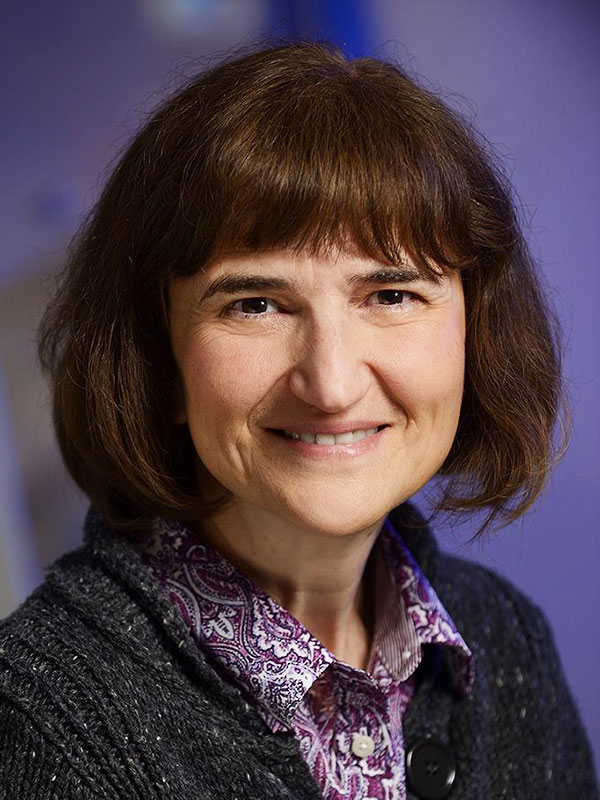
Kalina Hristova, Johns Hopkins University
Kalina Hristova received her BS degree from the University of Sofia, Bulgaria, and her PhD degree from Duke University, USA. She did post-doctoral work at the University of California, Irvine. She joined the faculty at Johns Hopkins University as an Assistant Professor in 2001. Now she is a Professor and the Marlin U. Zimmerman Faculty Scholar in the Departments of Materials Science and Engineering and Biomedical Engineering at Johns Hopkins. Kalina is a recipient of the Margaret Oakley Dayhoff award from the American Biophysical Society. The main focus of the research in her laboratory is the thermodynamic and structural principles that underlie membrane protein folding and signal transduction across biological membranes. More information about Kalina’s research is available at the BMMB Laboratory website.
Anne Kenworthy, Vanderbilt University
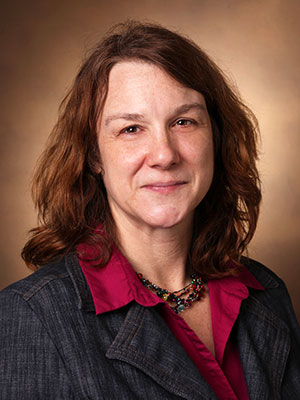 Anne Kenworthy, PhD is Professor of Molecular Physiology and Biophysics at Vanderbilt University School of Medicine. She received her BA from Kenyon College and PhD from Duke University Medical Center, and carried out postdoctoral studies at The Johns Hopkins University and the NIH. The major goal of her research program is to elucidate the structure, dynamics, and function of membrane domains. To do so, she utilizes quantitative fluorescence-based approaches to analyze membrane domains and protein and lipid dynamics both in living cells and model membrane systems. Her work has lead to a number of important advances, including insights into the structure and dynamics of lipid rafts, the discovery of novel intracellular trafficking mechanisms, the identification of new mechanisms by which caveolin and caveolae control cellular functions, and the development of mathematical models to analyze diffusion and reaction-diffusion behaviors by confocal FRAP. For more information, visit the Kenworthy Lab website.
Anne Kenworthy, PhD is Professor of Molecular Physiology and Biophysics at Vanderbilt University School of Medicine. She received her BA from Kenyon College and PhD from Duke University Medical Center, and carried out postdoctoral studies at The Johns Hopkins University and the NIH. The major goal of her research program is to elucidate the structure, dynamics, and function of membrane domains. To do so, she utilizes quantitative fluorescence-based approaches to analyze membrane domains and protein and lipid dynamics both in living cells and model membrane systems. Her work has lead to a number of important advances, including insights into the structure and dynamics of lipid rafts, the discovery of novel intracellular trafficking mechanisms, the identification of new mechanisms by which caveolin and caveolae control cellular functions, and the development of mathematical models to analyze diffusion and reaction-diffusion behaviors by confocal FRAP. For more information, visit the Kenworthy Lab website.

Graeme Milligan, University of Glasgow
I am currently Professor of Molecular Pharmacology and Gardiner Professor of Biochemistry at University of Glasgow in Scotland, where I have been based since 1986. I also currently act as Dean of Research of the College of Medical, Veterinary and Life Sciences, the largest of the 4 Colleges that comprise the University. The major focus of my research centers on the pharmacology and function of G protein-coupled receptors, an area in which I have published some 450 articles. Please visit Prof. Milligan’s webpage for more information about his research.
Paul Park, Case Western Reserve University
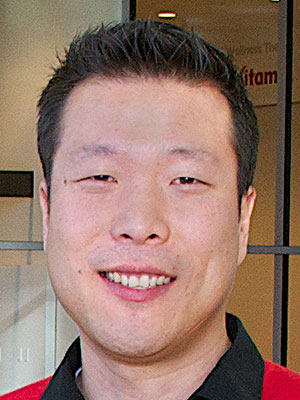 Paul Park is currently an assistant professor in the Department of Ophthalmology and Visual Sciences at Case Western Reserve University. He received his Ph.D. degree in the Department of Pharmaceutical Sciences at the University of Toronto. Dr. Park utilizes a multidisciplinary approach to understand the mechanism of action of G protein-coupled receptors. His current research focus is on the structure and function of rhodopsin in photoreceptor cells of the retina and in understanding the mechanism by which mutations in rhodopsin lead to retinal degenerative disorders. More information may be found at the Park Lab website.
Paul Park is currently an assistant professor in the Department of Ophthalmology and Visual Sciences at Case Western Reserve University. He received his Ph.D. degree in the Department of Pharmaceutical Sciences at the University of Toronto. Dr. Park utilizes a multidisciplinary approach to understand the mechanism of action of G protein-coupled receptors. His current research focus is on the structure and function of rhodopsin in photoreceptor cells of the retina and in understanding the mechanism by which mutations in rhodopsin lead to retinal degenerative disorders. More information may be found at the Park Lab website.
Valerică Raicu, University of Wisconsin-Milwaukee
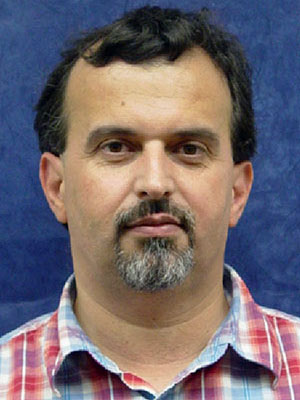 Valerică Raicu is a Professor in the Physics Department and affiliated faculty in the Biological Sciences Department at the University of Wisconsin-Milwaukee (UWM). Professor Raicu’s main research interests span the development of spectroscopic and micro-spectroscopic technology and applications to the study of protein-protein and cell-cell interactions. His focus over the past decade has been investigation of G-Protein coupled receptor oligomerization in living cells and the biological role it may play. He has authored or co-authored numerous peer-reviewed articles, book chapters and books on various topics in biophysics, as well as several patents in the area of optical micro-spectroscopy. He currently serves also as the Director of the UWM Small Businesses Collaboratory and is a co-founder of Aurora Spectral Technologies, LLC, which commercializes single and multiphoton microscopes with spectral resolution.
Valerică Raicu is a Professor in the Physics Department and affiliated faculty in the Biological Sciences Department at the University of Wisconsin-Milwaukee (UWM). Professor Raicu’s main research interests span the development of spectroscopic and micro-spectroscopic technology and applications to the study of protein-protein and cell-cell interactions. His focus over the past decade has been investigation of G-Protein coupled receptor oligomerization in living cells and the biological role it may play. He has authored or co-authored numerous peer-reviewed articles, book chapters and books on various topics in biophysics, as well as several patents in the area of optical micro-spectroscopy. He currently serves also as the Director of the UWM Small Businesses Collaboratory and is a co-founder of Aurora Spectral Technologies, LLC, which commercializes single and multiphoton microscopes with spectral resolution.
James W. Wells, University of Toronto
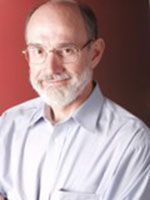 James W. Wells is a professor in the Department of Pharmaceutical Sciences and the Department of Pharmacology and Toxicology, University of Toronto. He received his undergraduate degree in pharmacy and his PhD degree in biochemistry, both from the University of Toronto. Following postdoctoral training in the Division of Molecular Pharmacology at the National Institute for Medical Research in London, he returned to the University of Toronto to join the staff of the Leslie Dan Faculty of Pharmacy. His interest is in the mechanism of signaling via G protein-coupled receptors, with the M2 muscarinic cholinergic receptor taken as the case in point. His approach is based on the development of explicit mechanistic models, which are used to decode the data and to inform the design of pharmacological, biochemical, and biophysical studies of preparations that range from single molecules to live cells. Of particular current interest is the status of the receptor as a monomer or an oligomer, which is studied in part by means of Förster resonance energy transfer. Please visit Dr. Wells’ webpage for more information.
James W. Wells is a professor in the Department of Pharmaceutical Sciences and the Department of Pharmacology and Toxicology, University of Toronto. He received his undergraduate degree in pharmacy and his PhD degree in biochemistry, both from the University of Toronto. Following postdoctoral training in the Division of Molecular Pharmacology at the National Institute for Medical Research in London, he returned to the University of Toronto to join the staff of the Leslie Dan Faculty of Pharmacy. His interest is in the mechanism of signaling via G protein-coupled receptors, with the M2 muscarinic cholinergic receptor taken as the case in point. His approach is based on the development of explicit mechanistic models, which are used to decode the data and to inform the design of pharmacological, biochemical, and biophysical studies of preparations that range from single molecules to live cells. Of particular current interest is the status of the receptor as a monomer or an oligomer, which is studied in part by means of Förster resonance energy transfer. Please visit Dr. Wells’ webpage for more information.
Yinglong Miao, University of California, San Diego
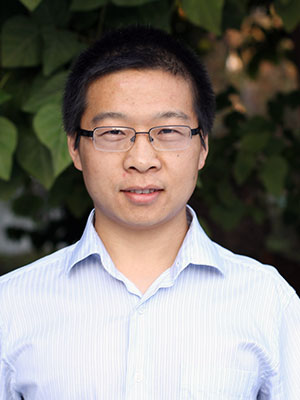 Yinglong Miao is currently a research scientist in Prof. J. Andrew McCammon’s research group at the University of California, San Diego. His major research efforts are dedicated to method development for improved enhanced sampling of biomolecules, computational modeling of biomolecular diffusion and computer-aided drug design targeting G-protein coupled receptors (GPCRs) that comprise of the largest family of human membrane proteins and represent primary targets of about one third of currently marketed drugs. Before joining Prof. McCammon’s group, he was a postdoc at UT/ORNL Center for Molecular Biophysics during 2009-2012, working with Profs. Jeremy Smith and Jerome Baudry on combining neutron scattering, NMR and molecular dynamics simulation to investigate the dynamics of cytochrome P450cam. He obtained his PhD in theoretical and computational chemistry in 2009 in Prof. Peter Ortoleva’s Center for Cell and Virus Theory in the Chemistry Department of Indiana University. His graduate research was focused on all-atom multiscale computational modeling of viral dynamics.
Yinglong Miao is currently a research scientist in Prof. J. Andrew McCammon’s research group at the University of California, San Diego. His major research efforts are dedicated to method development for improved enhanced sampling of biomolecules, computational modeling of biomolecular diffusion and computer-aided drug design targeting G-protein coupled receptors (GPCRs) that comprise of the largest family of human membrane proteins and represent primary targets of about one third of currently marketed drugs. Before joining Prof. McCammon’s group, he was a postdoc at UT/ORNL Center for Molecular Biophysics during 2009-2012, working with Profs. Jeremy Smith and Jerome Baudry on combining neutron scattering, NMR and molecular dynamics simulation to investigate the dynamics of cytochrome P450cam. He obtained his PhD in theoretical and computational chemistry in 2009 in Prof. Peter Ortoleva’s Center for Cell and Virus Theory in the Chemistry Department of Indiana University. His graduate research was focused on all-atom multiscale computational modeling of viral dynamics.
Laurence Miller, Mayo Clinic, Arizona
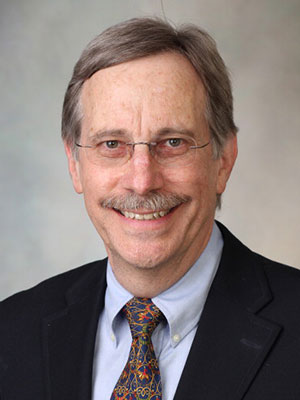 Laurence J. Miller, M.D is a Professor of Medicine, Pharmacology, Biochemistry and Molecular Biology and a co-director of the HEALth Program at the Center for Metabolic and Vascular Biology, a collaboration between Mayo Clinic and Arizona State University. The long-standing research focus of Dr. Miller has been in the area of G protein-coupled hormone receptor structure, function and regulation. This has focused particularly on cholecystokinin (CCK)-gastrin and secretin-vasoactive intestinal polypeptide (VIP)-glucagon-like peptide families of peptides and receptors. These receptors are important for nutritional homeostasis, digestion, metabolism and cell growth.\
Laurence J. Miller, M.D is a Professor of Medicine, Pharmacology, Biochemistry and Molecular Biology and a co-director of the HEALth Program at the Center for Metabolic and Vascular Biology, a collaboration between Mayo Clinic and Arizona State University. The long-standing research focus of Dr. Miller has been in the area of G protein-coupled hormone receptor structure, function and regulation. This has focused particularly on cholecystokinin (CCK)-gastrin and secretin-vasoactive intestinal polypeptide (VIP)-glucagon-like peptide families of peptides and receptors. These receptors are important for nutritional homeostasis, digestion, metabolism and cell growth.\
Reza Vafabakhsh, Northwestern University
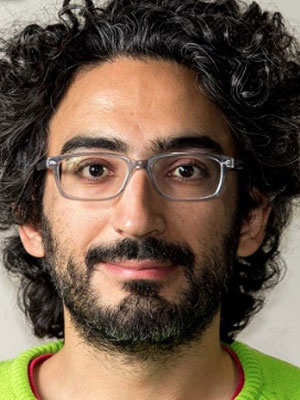 Reza Vafabakhsh is currently an Assistant Professor of Molecular Biosciences at the Northwestern University. He received his PhD in physics from University of Illinois in 2013 followed by post-doctoral work at the University of California, Berkeley.
Reza Vafabakhsh is currently an Assistant Professor of Molecular Biosciences at the Northwestern University. He received his PhD in physics from University of Illinois in 2013 followed by post-doctoral work at the University of California, Berkeley.
His laboratory is interested in characterizing the conformational states that are essential for function of membrane proteins and GPCRs specifically and understanding how conformational dynamics couple to their biological mechanisms. More information may be found at the Reza Lab website (www.rezalab.org)
Ionel Popa, University of Wisconsin-Milwaukee
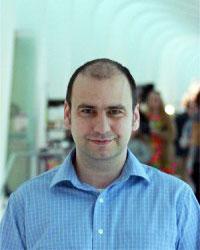 Ionel Popa received his Ph.D. in Physical and Analytical Chemistry from University of Geneva in 2010, under the direction of Prof. Michal Borkovec. He then joined the group of Julio M. Fernandez at Columbia University to study protein biophysics, where he held the positions of Postdoctoral Fellow and Associate Research Scientist. Since fall 2015, he joined the University of Wisconsin-Milwaukee, where he currently holds the rank of Assistant Professor. Dr. Popa’s lab develops and uses cutting-edge techniques to study the physics of proteins under force. He combines single molecule force spectroscopy and bio-materials design with protein engineering, surface chemistry and computer programming. His long-term goal is to understand how proteins operating under force use their folding state as a mechanical signal, and how this signal propagates from single molecule level to tissue and organs.
Ionel Popa received his Ph.D. in Physical and Analytical Chemistry from University of Geneva in 2010, under the direction of Prof. Michal Borkovec. He then joined the group of Julio M. Fernandez at Columbia University to study protein biophysics, where he held the positions of Postdoctoral Fellow and Associate Research Scientist. Since fall 2015, he joined the University of Wisconsin-Milwaukee, where he currently holds the rank of Assistant Professor. Dr. Popa’s lab develops and uses cutting-edge techniques to study the physics of proteins under force. He combines single molecule force spectroscopy and bio-materials design with protein engineering, surface chemistry and computer programming. His long-term goal is to understand how proteins operating under force use their folding state as a mechanical signal, and how this signal propagates from single molecule level to tissue and organs.
